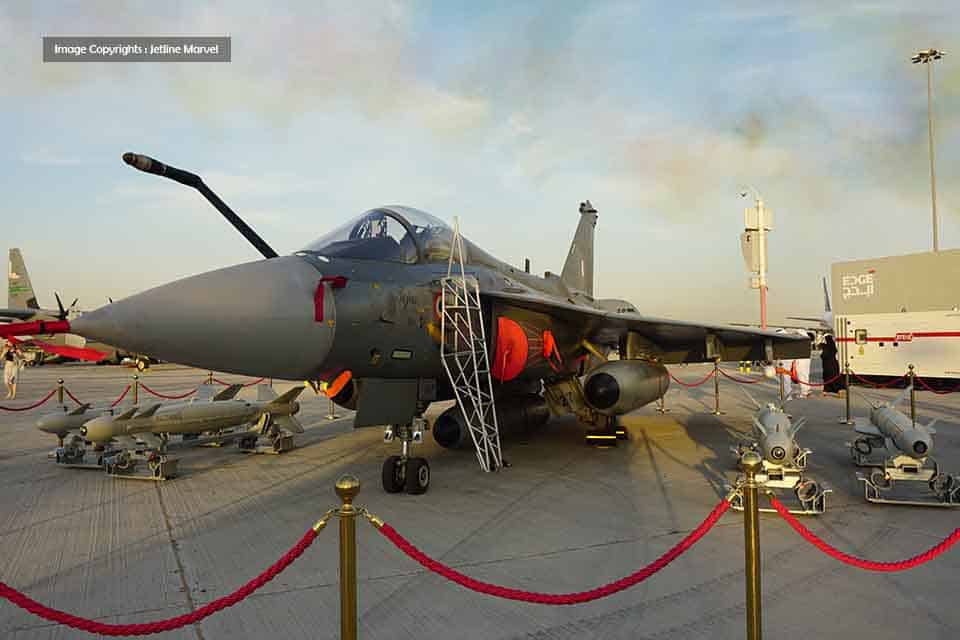Aviation
Engine Playing Hide and Seek with the Tejas Fighter Jet

India’s most anticipated fighter jets are encountering hurdles before they can enter the defense field due to engine delays affecting the manufacturer.
The Air Force has placed a significant order with HAL for 40 aircraft, but the Tejas Mk2 is also experiencing delays because of issues with its new variant engine.
The development of the Tejas fighter jet has indeed faced challenges, particularly in securing a reliable engine that meets its performance and operational standards. The journey has felt like a game of “hide and seek.” Here’s a brief overview of the key developments:
- Original Engine Choice: The Tejas program originally relied on the General Electric (GE) F404 engine. While this engine served well during the early development and flight testing, it was clear that the Tejas Mk1 version needed more powerful propulsion for future variants.
- Indigenous Kaveri Engine: The Defence Research and Development Organisation (DRDO) was tasked with developing an indigenous engine called Kaveri. However, the Kaveri program faced multiple delays and technical failures, never reaching the necessary thrust levels required for the Tejas Mk2 and beyond. As a result, the Kaveri project was essentially shelved for the Tejas program, with DRDO still pursuing its development for other platforms.
- GE F414 Engine: To meet the higher power demands of the upcoming Tejas Mk2 and the naval variant, India chose the GE F414 engine. This engine is significantly more powerful than the F404, and the Mk2 variant is being designed around this engine. However, contract negotiations and other delays often slowed down its adoption.
- Ongoing Engine Uncertainty: The Indian Air Force (IAF) and the government have continued to explore indigenous options for the Tejas engine, while also relying on foreign engines like the F404 and F414. The situation often feels like a back-and-forth process, with no single solution sticking permanently, leading to the perception of an “engine hide-and-seek” scenario.
This complex journey is a key part of the Tejas’ development challenges, but progress is being made with the F414 powering the next iterations of the fighter jet.

Aviation
Airbus Enhances A350 Cabin with 10-Abreast Seating

Airbus has announced a new partnership with Jiatai Aircraft Equipment, a Chinese aircraft seating manufacturer, to supply upgraded economy-class seats for the A350 widebody series.
This collaboration, unveiled at the 2024 Airshow China, focuses on developing a newly designed economy seat tailored for the A350‘s New Production Standard (NPS) cabin.
One of the key features of the NPS cabin is the ability to accommodate 17-inch wide economy seats, compared to the previous 16.5-inch wide seats that airlines were limited to in the A350’s earlier configurations.
British Airways Unveils Its Brand-New First Class Cabin for the Airbus A380
This change is made possible by the expanded space in the NPS cabin, which is 35 inches longer and 4 inches wider than the previous version. This extra space is achieved by slightly moving the cockpit wall forward and shifting the rear pressure bulkhead back by one frame.
The wider cabin allows airlines to add up to 30 extra economy seats without compromising comfort. For airlines opting for a 3-4-3 seating layout, the 17-inch wide seats are an excellent choice for a more comfortable passenger experience. However, some airlines, such as Iberia, may choose to retain a 9-abreast layout with wider seats for added comfort.
The NPS cabin also offers enhanced flexibility for airline operators. One major advantage is the ability to easily switch between a 9-abreast and 10-abreast seating configuration without requiring significant downtime for aircraft reconfiguration. Airlines can use the same seat rails, tracks, and IFE interfaces, making the transition smoother and quicker.
Etihad Airways Unveils 10 Exciting New Routes for 2025
In addition, the design of the floor attachments and air-conditioning systems has been optimized for 10-abreast seating, meaning airlines can upgrade their cabins without needing to make substantial modifications to the aircraft’s structure.
Though it’s still unclear when Jiatai’s economy-class seats will be officially added to the A350’s Buyer Furnished Equipment (BFE) catalogue, the collaboration marks a significant step toward enhancing the A350’s cabin offerings.
With this partnership, Airbus is providing more seating options for airlines, ensuring that they can meet diverse customer needs while improving overall operational efficiency.
-

 Aviation2 months ago
Aviation2 months agoMicrosoft Flight Simulator Raises $3 Million to Bring Back the An-225 Mriya
-

 Airlines2 months ago
Airlines2 months agoQatar Citizens Can Travel to the United States Without a Visa
-

 Aviation2 months ago
Aviation2 months agoQatar Airways bans these new Electronic Devices on plane
-

 Airlines2 months ago
Airlines2 months agoJapan Airlines Rolls Out Free Domestic Flights to International Passengers
-

 Travel2 months ago
Travel2 months agoQatar Airways Launches Four Additional Flights from Amsterdam
-

 Defence2 months ago
Defence2 months agoWhich Country Has the Largest Fleet of Fighter Aircraft?
-

 Airport2 months ago
Airport2 months agoWestern Sydney Airport Welcomes Its First Plane After 6 Years of construction
-

 Airlines4 days ago
Airlines4 days agoDAMAC Air: Dubai’s New Luxury Airline Offers Free Flights for Registration









You must be logged in to post a comment Login